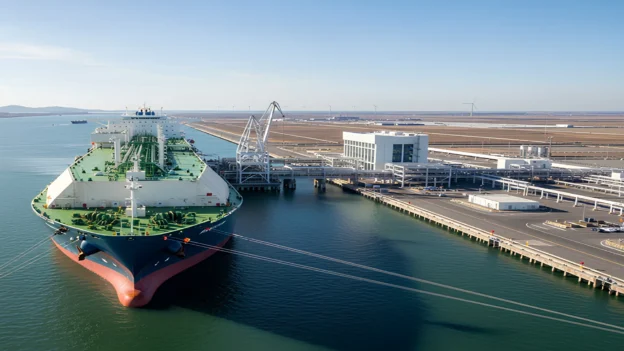In an international landscape shaped by geopolitical tensions, logistical constraints, and an urgent need for decarbonization, Liquefied Natural Gas (LNG) is solidifying its role as a central player in the new energy paradigm. Its capacity for maritime transport enables countries to diversify supply routes, reduce dependence on single suppliers, and enhance global energy security.
Increasingly valued by nations redesigning their energy matrices around reliability and sustainability, LNG serves as a critical buffer during emergencies or seasonal demand peaks. Its strategic versatility grants governments greater control over national energy policies and ensures economic and industrial continuity, even under adverse conditions.
Energy transition and sustainable mobility
In the global effort to reduce emissions, LNG is emerging as a cleaner alternative to traditional fossil fuels. Acting as a bridge fuel, it enables the progressive replacement of coal and oil without compromising energy continuity.
Power plants fueled by LNG provide rapid response capabilities to manage the variability of intermittent renewable sources such as solar and wind, thereby reinforcing the reliability of electric grids. Furthermore, its infrastructure is adaptable to future networks for green hydrogen and renewable gases, positioning it as a key component in transitional energy ecosystems.
In the transportation sector, the use of LNG-powered engines in ships and freight vehicles is expanding rapidly. This technology significantly reduces sulfur and nitrogen oxide emissions, supporting regulatory compliance. Simultaneously, the expansion of specialized port infrastructure enables an effective energy transition, driving cleaner and more efficient logistics solutions, both environmentally and economically.
Technological innovation and environmental sustainability
Technological advances have expanded the operational frontiers of LNG. Floating units such as Floating Liquefied Natural Gas (FLNG) and Floating Storage and Regasification Units (FSRU) enable gas to be liquefied, stored, and regasified directly offshore, reducing logistics costs and accelerating commercialization.
The industry is also investing in digital tools and automation. Artificial intelligence systems are being applied to monitor emissions, forecast consumption, and optimize regasification—enhancing efficiency and reducing environmental impact.
One of the main challenges is methane emission mitigation, due to its high global warming potential. In response, the sector is deploying leak detection technologies, advancing Carbon Capture and Storage (CCS), and exploring the use of renewable electricity in the liquefaction process to lower lifecycle emissions.
Latin America and its strategic role in the LNG economy
Latin America is emerging as a strategic hub in the global LNG economy. Countries such as Chile, Colombia, and Panama are strengthening their import and regasification capacities, enhancing energy resilience and attracting investment.
At the same time, export-oriented nations like Mexico, Argentina, and Trinidad & Tobago are developing infrastructure to serve international markets. The promotion of joint terminals and regional gas pipeline networks points to a path toward Latin American energy integration, reinforcing LNG’s role as a catalyst for economic growth and technological innovation in the region.
The future of LNG: Cleaner, smarter, and more competitive
The LNG sector is evolving toward a cleaner, more digitally integrated model. Intelligent platforms and digital traceability systems are transforming the logistics chain—optimizing turnaround times, minimizing product loss, and enhancing transparency for stakeholders.
Moreover, the integration of blockchain technologies for cargo tracking is reinforcing trust in international LNG trading operations.
Green bond financing and adherence to ESG (Environmental, Social, and Governance) criteria are gaining significant traction, aligning LNG development with global sustainability standards. A prominent case is the Energía Costa Azul (ECA LNG) project, developed by Sempra Infrastructure and TotalEnergies, which was partially funded through green bonds and incorporates environmental monitoring and energy efficiency practices.
A vital ally for the global energy system
LNG represents more than just a transition fuel—it is a strategic pillar of global energy stability. Its adaptability, compatibility with low-carbon technologies, and role in transportation, power generation,
and industry position it as a reliable enabler of a sustainable energy future.
Far from being part of the problem, LNG is increasingly seen as part of the solution.
This article was developed by specialist Mario Toyo and published as part of the fifth edition of Inspenet Brief magazine August 2025, dedicated to technical content in the energy and industrial sector.

